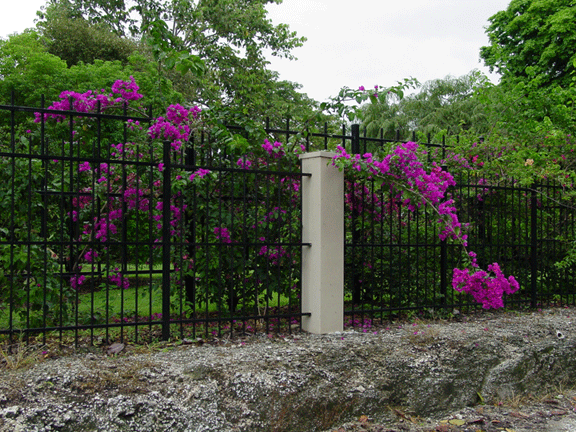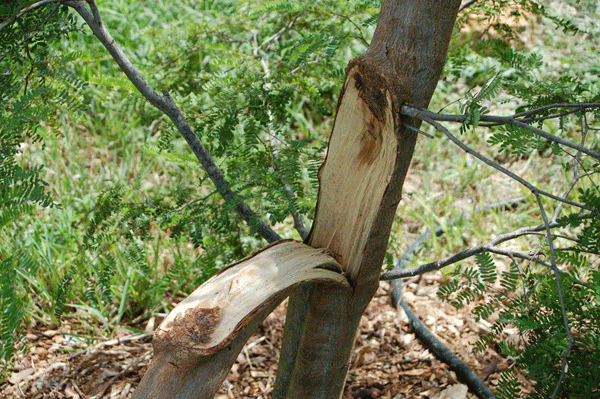The Rules are Different Here

As Published in the Miami Herald
If you are a transplant from the north or simply a new gardener, you will quickly find out that the rules of growing plants in South Florida are different from just about everywhere else. There are four main factors that separate us from the rest of the plant growing world and also make growing things somewhat difficult: our soil, the threat of hurricanes, our climate and a plethora of pests.
Soils
 |
| To help combat our rocky soils, choose well adapted plants like this bougainvillea. |
Our soils are the main feature that set us apart from the rest. In fact, a portion of our main soil type, Miami Limestone, is found only one other place in the world, The Bahamas. Miami Limestone is composed of oolitic limestone along the east coast and bryazoan limestone further west. Miami limestone is high in pH, somewhere around 7.8, which means that many acid loving plants do not do well in our soils and many minor nutrients like iron and manganese cannot be easily absorbed. The fact that Miami limestone is simply rock makes our soils nutrient poor and unable to provide much water for our plants.
Growing plants successfully in Miami limestone is accomplished by choosing plants that are well adapted to this type of soil such as natives and similar plants. Mulching also helps plants hold on to water and nutrients and mulch will also decompose and provide nutrients for your plants. For some especially needy plants, a fertilizer program may be needed to help them deal with our barren native soil.
Hurricanes
 |
| Hatracking trees is never a solution. |
The summertime threat of hurricanes is a factor to consider when planting your garden. Only trees with strong root systems and durable branches should be planted as weak rooted trees can topple easily and brittle branches may break in even the slightest storm. Mature trees should be pruned to allow wind to pass through them using thinning cuts. Thinning cuts are cuts made back to major branches or the trunk and are not made in the middle of branches.
Hatracking is often used as a hurricane proofing technique for trees. Hatracking involves cutting off all limbs above a certain point in a tree. Never allow your trees to be hatracked as this practice does not prepare trees for hurricanes and actually weakens the overall health of the tree.
Climate
 |
| Brittle trees can suffer damage in even minor wind storms. |
South Florida’s seasons are divided into a wet and dry season rather than winter, summer, spring and fall. The majority of our yearly rainfall happens between May and October. The months of November through April are known as the dry season and see very little rain. South Florida plants therefore need to be able to take many months of heavy rains and go through several months of almost no supplemental water. Our monsoon climate makes growing plants a challenge, but much like the solution to our soil problem, choosing the right plants can allow you to still have a lovely garden without having to resort to irrigation in the winter months.
Pests
 |
| Natural predators like this ladybug will actually do a better job of cleaning up these aphids than a pesticide. |
Because South Florida is sub-tropical, we can grow a vast variety of wonderful plants. Our warm temperatures and wide plant palette have the unfortunate downside of attracting a large assortment of pests. New pests like the Rugose Whitefly are combining with older threats like the Ficus Whitefly and the Croton Scale to cause major havoc in the South Florida plant community.
Pesticides are usually not the best option to deal with pests as they are toxic and can easily be used incorrectly. Pesticides very often destroy natural predator insects such as ladybugs that help to control pest populations. The best way to encourage natural predators and to keep your pests at bay is to plant a wide variety of plants in your yard and to refrain from using pesticides.
Rocky soils, hurricanes, a monsoon climate and a large number of pests combine to make South Florida a very difficult place to grow plants. The good news is that there are hundreds of plants that are well adapted to these conditions and by making prudent plant choices you can create your backyard Eden without a tremendous amount of effort.
